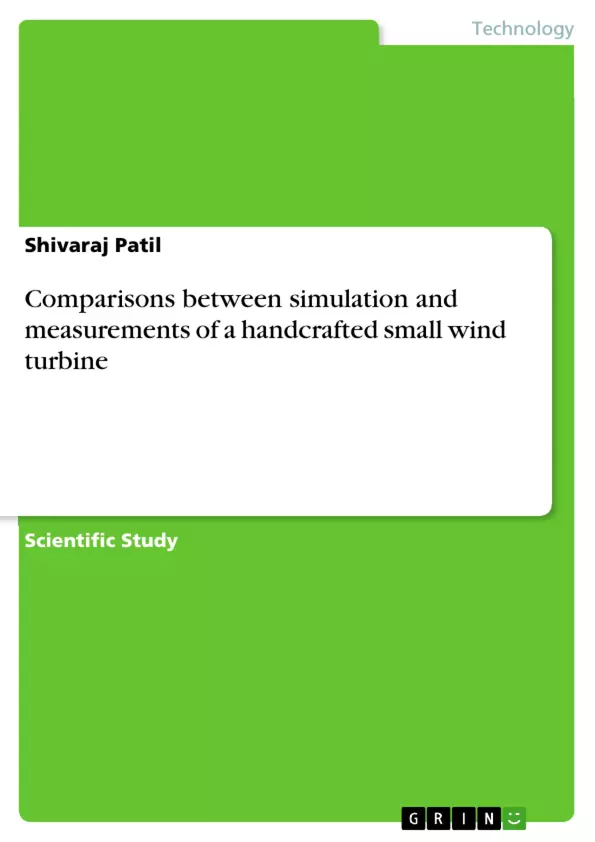In this paper, the differences between a performance analysis of a wind turbine by computational simulations and by experimental methods such as tests in the wind tunnel ”GroWiKa” belonging to the TU Berlin are analysed. The qualitative and quantitative aspects of both the rotor of the turbine and its electric generator are analyzed under specific experimental methods whose resulting graphs are compared with simulation software such as Qblade for rotor performance and Open AFPM for electric generator performance. Finally, from this comparison, an analysis is derived by which the accuracy of the information obtained by the used software is validated.
Due to the recent climate crisis and new trends regarding the development of energy production, wind energy has become one of the most used solutions in the field of renewable energies. This technology offers efficiencies and performance even beyond energy production systems such as solar energy and even internal combustion engines based on biodiesel. Another convenience of wind energy is the fact that it has a wide potential for places even hard to reach by other technologies. But, just as it has a great number of advantages, it also has disadvantages because it is a technology that is still under development and its mode of implementation depends on a great number of variables such as mechanical, electrical and climate factors that must be taken into account when developing the different types of projects.
Inhaltsverzeichnis (Table of Contents)
- Introduction
- Simulation
- Rotor characteristic curve
- Generator characteristic curve
- Measurements
- Rotor
- Generator
- Comparison
- Rotor
- Generator
Zielsetzung und Themenschwerpunkte (Objectives and Key Themes)
This paper aims to compare the results of performance analysis of a small wind turbine obtained from computational simulations and experimental measurements. The primary goal is to validate the accuracy of the simulation software Qblade and OpenAFPM by comparing the simulated data with the actual measurements conducted in a wind tunnel.
- Comparison of simulation and measurement data for wind turbine performance analysis
- Evaluation of the accuracy of simulation software Qblade and OpenAFPM
- Analysis of the influence of different input parameters on simulation results
- Exploration of potential sources of error in both simulation and measurement methods
- Assessment of the feasibility and limitations of using simulation software for wind turbine design and optimization
Zusammenfassung der Kapitel (Chapter Summaries)
- Introduction: This chapter introduces the context of wind energy as a renewable energy source and highlights its advantages and disadvantages. It then discusses the role of simulation software in wind turbine development and the benefits of open-source software such as OpenAFPM and Qblade.
- Simulation: This chapter describes the simulation process using Qblade and OpenAFPM. It focuses on the rotor characteristic curve simulation, discussing the importance of Reynolds number iteration and aerodynamic airfoil analysis. It also details the generator characteristic curve simulation, outlining the process and the influence of different input parameters.
- Measurements: This chapter outlines the experimental setup and the methods used to measure the wind turbine's performance in the GroWiKa wind tunnel. It describes the sensors used and potential sources of error, such as sensor accuracy and variations in the handcrafted rotor's geometry.
- Comparison: This chapter presents a comparative analysis of the simulated and measured data. It analyzes the rotor characteristic curves obtained from both methods, noting similarities and discrepancies. It also compares the generator performance data, highlighting the influence of different input parameters and the accuracy of the simulations.
Schlüsselwörter (Keywords)
The primary keywords and focus topics of this paper are: wind energy, wind turbine, simulation, measurement, Qblade, OpenAFPM, wind tunnel, Reynolds number, rotor characteristics, generator characteristics, performance analysis, accuracy validation.
- Arbeit zitieren
- Shivaraj Patil (Autor:in), 2019, Comparisons between simulation and measurements of a handcrafted small wind turbine, München, GRIN Verlag, https://www.hausarbeiten.de/document/981428


